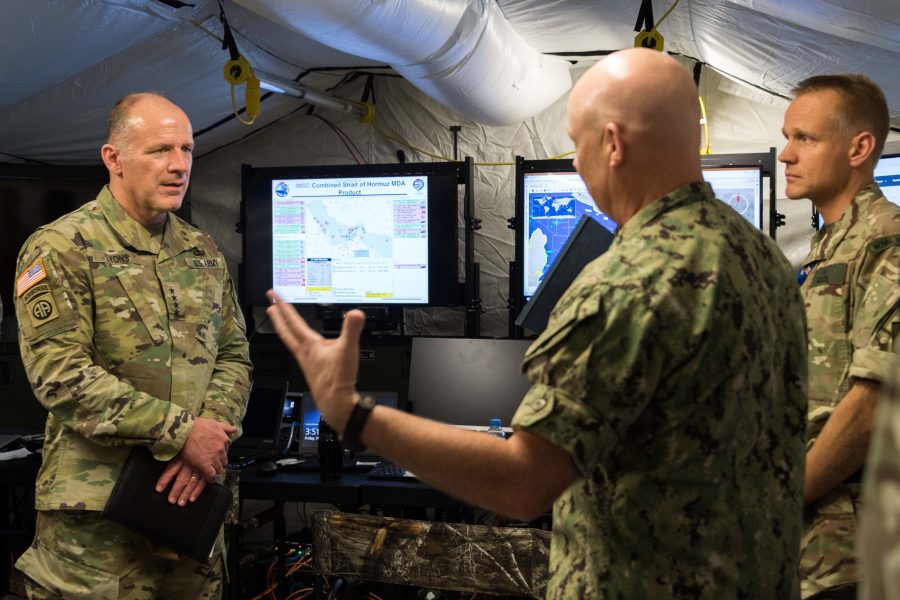A military team is working with SpaceX to flesh out the prospect of shipping routes that pass through space, the head of U.S. Transportation Command said Oct. 7.
That group could demonstrate as early as 2021 whether quickly sending cargo around the globe via space is feasible, Army Gen. Stephen R. Lyons said.
“Think about moving the equivalent of a C-17 payload anywhere on the globe in less than an hour,” Lyons said at a National Defense Transportation Association event. “Think about that speed associated with the movement of transportation of cargo and people. There is a lot of potential here.”
Pentagon officials have publicly discussed the intersection of logistics and space for at least three years, but partnerships between TRANSCOM, SpaceX, and Exploration Architecture Corp. are a formal step toward resolving technical and cost issues as well as “legal, diplomatic, statutory, and regulatory” hurdles to commercial space transportation, the command said in a release.
“I had no sense for how fast SpaceX was moving, but I’ve received their update and I can tell you they are moving very rapidly in this area,” Lyons said.
Industry is “examining the use cases, technical and business feasibility, and concepts of employing space as a mode of transportation supporting USTRANSCOM’s role as the Defense Department’s global logistics provider,” the command said in the release.
If the concept succeeds and is cost-effective, private companies could work with TRANSCOM to ferry cargo to the moon and Mars in support of NASA, the Space Force, and the business sector. The Defense Department is eyeing long-term space transportation agreements that would let the military turn to private companies to rapidly respond to emergencies.
“Commercial space transportation would allow point-to-point rapid movement of vital resources while eliminating en route stops or air refueling,” TRANSCOM said. “This capability has the potential to be one of the greatest revolutions in transportation since the airplane.”
Planes can still carry heavier and larger amounts of cargo, and require less money and a smaller logistical footprint to launch and land than spacecraft. Their turnaround time is also much shorter than rockets and spaceships.
Discussion on the topic has picked up now that Congress has created a Space Force, pushing the military to think about how the cosmos could affect all manner of operations.
In August 2018, then-Air Mobility Command boss Gen. Carlton D. Everhart II projected it would take five to 10 years to establish a space mobility enterprise. The military has considered the possibility of using SpaceX’s Starship—the developmental spaceship intended to bring people to other celestial bodies from Earth—to carry goods across the globe.
Everhart also visited potential space transportation contractors SpaceX and Virgin Orbit to discuss how the new sector might unfold. He envisioned that instead of taking 10 hours to send supplies around the world, rockets and on-orbit depots could allow cargo drops in 30 minutes.
“What happens if we pre-position cargo in space? I don’t have to use terrestrial means. I don’t have to use water means. I can position it in space, have a resupply vehicle come up and come back down,” Everhart said. “I don’t have to have people there, I just have to have cargo there—automated loading, those types of things.”
